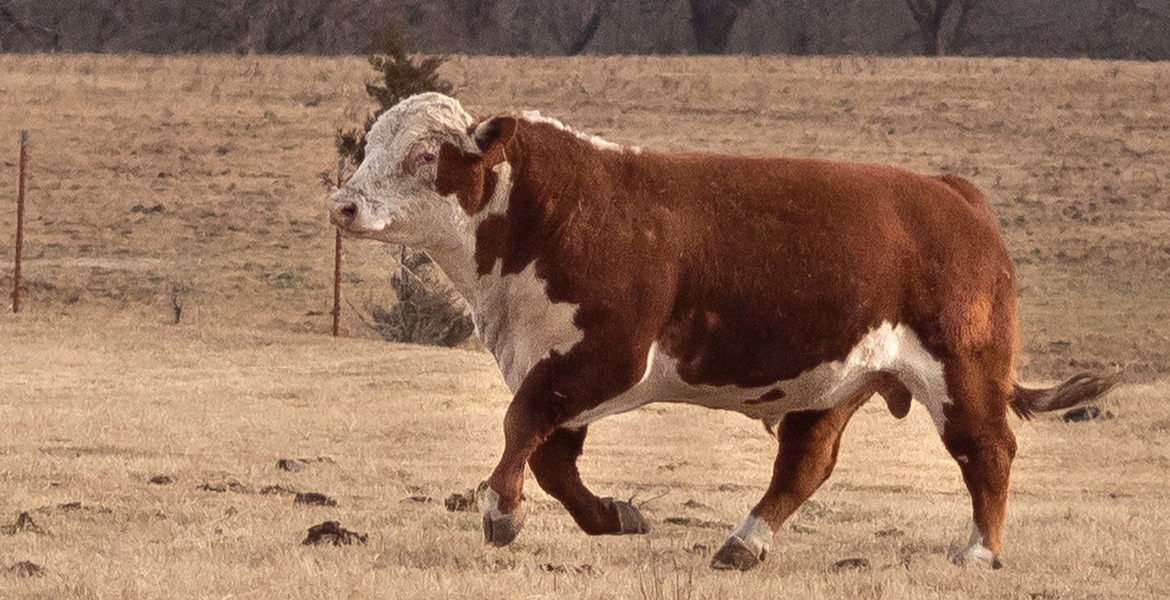
Cow-calf producers should watch for signs that may indicate presence of trichomoniasis
Friday, May 22, 2020
Cattle producers need to be aware that non-pregnant cows going through the breeding season and those that abort might potentially be infected with the reproductive disease trichomoniasis, Oklahoma State University Extension experts said.
Trichomoniasis is caused by a protozoan called Tritrichomonas foetus. Infection in cows and heifers used as cow replacements can lead to abortions, which normally occur in the first four months of pregnancy. The protozoan also can cause infertility in female cattle. Unlike some bovine diseases, bulls play a major role in trichomoniasis transmission. Older bulls are at greater risk than young bulls.
“Since infected bulls and cows look and act normal, trichomoniasis is not typically considered until cows that should be bred are found open when pregnancy checked or when cows that are with a bull year-round take over a year to calve,” said Dr. Barry Whitworth, OSU Extension veterinarian and food animal quality and health specialist.
In short, dollars lost to a cow-calf operator can be substantial by the time trichomoniasis is determined to be the cause behind a cattle enterprise’s reproductive challenges. Usually the organism in females will clear, but it takes about four to five months. A cow’s immunity is short-lived, and reinfection is possible in the next breeding season, Whitworth said. Sometimes the protozoan in a cow can linger and infect bulls.
Since no treatments are available, prevention is the key to keeping the disease out of a herd. Oklahoma trichomoniasis regulations focus on bulls.
Whitworth said producers should work closely with veterinarians certified to collect samples for the testing and to ensure they have good fencing to prevent contact with neighboring bulls.
Bulls entering Oklahoma from any state must be tested negative for trichomoniasis within 60 days of entry and be identified with an official identification device. Acceptable forms of identification are:
- A silver metal U.S. Department of Agriculture tag.
- A radio frequency identification tag with the 840 country code.
- Registration tattoo.
- Branding if accompanied by a copy of the registration papers.
Three negative culture tests at least one week apart or one negative polymerase chain reaction test – more widely known as a PCR test – meet state testing requirements. All bulls entering Oklahoma also must meet applicable tuberculosis and brucellosis entry requirements and the shipment must have a valid Certificate of Veterinary Inspection.
By Oklahoma law, any bull two years or older that changes ownership must test negative for trichomoniasis within 30 days of a move. Exceptions are:
- Bulls less than 18 months of age that can be certified as virgins.
- Bulls consigned directly to slaughter.
- Rodeo or bucking bulls taken to an event and then out of state with no change of ownership.
“Be aware vaccinating cows does not prevent infection, though it can reduce the incidence of abortions and decrease the length of time cows are infected,” said Dr. Rosslyn Biggs, OSU Extension veterinarian and director of continuing education for the university’s College of Veterinary Medicine.
Biggs said a defined breeding season and consistent pregnancy testing puts a cattle producer in the best possible position to notice reproductive problems that may exist in a herd.
Selling female cattle that have been exposed to a known trichomoniasis-positive bull is illegal in Oklahoma. All cows and heifers exposed to a positive bull are required to be officially identified and can change ownership only if:
- The cow or replacement heifer is diagnosed at least four months pregnant by an accredited veterinarian.
- The female is sold for slaughter only.
- The animal is consigned to an approved feedlot to be fed for slaughter only.
- The female has a calf less than 30 days old and has not been exposed to a bull since calving.
- Six months have passed since the cow or replacement heifer’s mating with a bull.
For more information about trichomoniasis and other cattle health issues, consult OSU Extension fact sheets which are available online and through all OSU Extension county offices. Video segments detailing trichomoniasis recommendations also are available online through OSU Extension’s award-winning agricultural television program SUNUP.
OSU Extension is one of two state agencies administered by the university’s Division of Agricultural Sciences and Natural Resources and is a key part of OSU’s state and federally mandated teaching, research and Extension land-grant mission.
MEDIA CONTACT: Donald Stotts | Agricultural Communications Services | 405-744-4079 | donald.stotts@okstate.edu
